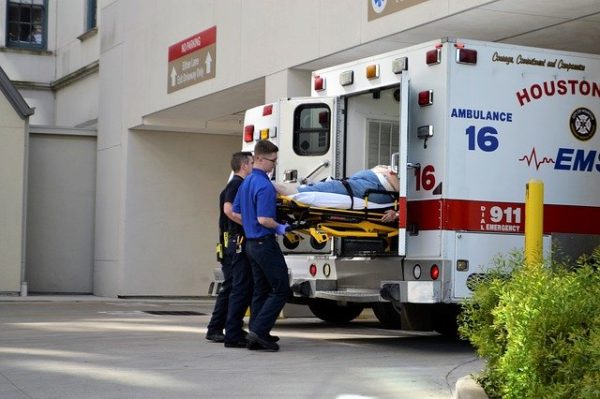Hawaii is one of about a dozen no-fault insurance states which require Personal Injury Protection (PIP) coverage in some way, shape, or form. PIP is designed to speed up the compensation process in “fender bender” accidents that only cause property damage and non-serious injuries.
The effectiveness of PIP insurance is hotly debated. There is some evidence that PIP increases insurance fraud. For example, the swoop-and-squat fraud scheme is more common in no-fault states, like Hawaii, than it is elsewhere. Unscrupulous motorists cut off other drivers, then slam on their brakes to induce rear-end collisions. Such “accidents” are not subject to judicial oversight in no-fault states. Therefore, many fraudsters get away with it.
Fraudulent claims drive up insurance premiums for everyone. Furthermore, a no-fault/PIP system arguably shifts responsibility for injury compensation from individual tortfeasors (negligent drivers) to insurance companies.
All this being said, most vehicle collisions in Hawaii involve a serious injury, as outlined below. Therefore, the no-fault/PIP rule usually does not apply. And, a Kamuela personal injury lawyer can obtain additional compensation for victims.
What Does PIP Cover?
Hawaii requires drivers to carry $10,000 of PIP insurance. That’s not very much coverage, especially since PIP applies to
- Vehicle damage
- Emergency transportation expenses
- Lost wages
- Medical bills
- Childcare services necessary because of the accident, and
- Related household expenses (e.g. paying someone to cut the grass).
As a general rule, if your vehicle was drivable after the collision, PIP/no-fault will probably take care of your losses. Procedure varies among different carriers. Generally, victims file claims against the other driver’s insurance policy, just like they were filing claims against their own policies. Our Kamuela personal injury lawyers are more than happy to assist victims with this paperwork.
If your vehicle was not drivable after the wreck, you or someone else in the vehicle probably sustained a serious injury, as outlined below.
Hawaii’s Serious Injury Definition
Different no-fault states have different ways of drawing the line between a fender bender and a serious injury accident. Some states, like Minnesota, use a monetary threshold. In the Gopher State, if the medical bills exceeded $4,000, the victim sustained a serious injury.
Like most other no-fault states, Hawaii’s definition of a serious injury is more subjective. A serious injury is any of the following:
- Substantial Risk of Death: Many victims have pre-existing medical conditions or they are physically vulnerable to certain injuries. So, what might be a non-serious injury to some people is a serious injury to these people.
- Disfigurement: Most physical wounds leave scars. If the disfigurement is on a visible part of the body, like a hand or face, and it is noticeable at all, the permanent disfigurement usually qualifies as a serious injury.
- Protracted Loss or Impairment of Function: Most Kamuela personal injury lawyers rely on this part of the serious injury definition. The vague, general wording in this subpart could mean almost anything.
Procedurally, most insurance companies agree the victim sustained a serious injury. It’s usually pretty obvious. If the insurance company contests this issue, the judge typically hears evidence and arguments at a pretrial hearing and then makes a decision.
Some Serious Injury Examples in Car Crash Claims
Nationwide, car wrecks seriously injure millions of Americans every year. Even the most advanced restraint and safety systems cannot absorb all the force in a high-speed wreck. Some specific examples include:
- Head Injuries: Car wrecks are the leading cause of Traumatic Brain Injuries (TBIs) in Hawaii. Frequently, victims hit their heads on a dashboard or another solid object. Sometimes, the motion alone causes whiplash, a specific type of head/neck injury that could cause paralysis. TBIs are treatable, but they are incurable.
- Broken Bones: Accidental-fall broken bones usually heal fully. Car-crash broken bones are different. Doctors normally use metal screws or plates to set the bone. As a result, there is at least a slight permanent loss of mobility.
- Exsanguination: Blood loss carries a very high risk of death. So, even if doctors are able to stop the bleeding and the victim fully recovers, exsanguination is normally a “serious injury” in Hawaii.
Some insurance company defenses, such as comparative fault, sometimes come into play here. Contributory negligence shifts part of the blame for the accident from the tortfeasor to the victim. So, the tortfeasor did not technically “cause” a “serious injury” in at least some comparative fault cases.
Reach Out to a Skilled Kamuela Personal Injury Attorney
Serious injuries need to be addressed immediately. Largely because of Hawaii’s vague law, vehicle collisions often cause serious injuries. While no amount of money will undo your accident or magically cure your pain, serious injuries do come with certain indeniable financial realities. For a confidential consultation with an experienced Kamuela personal injury lawyer, contact Olson & Sons, L.C. at 808-885-8533 . We do not charge upfront legal fees in personal injury cases.

